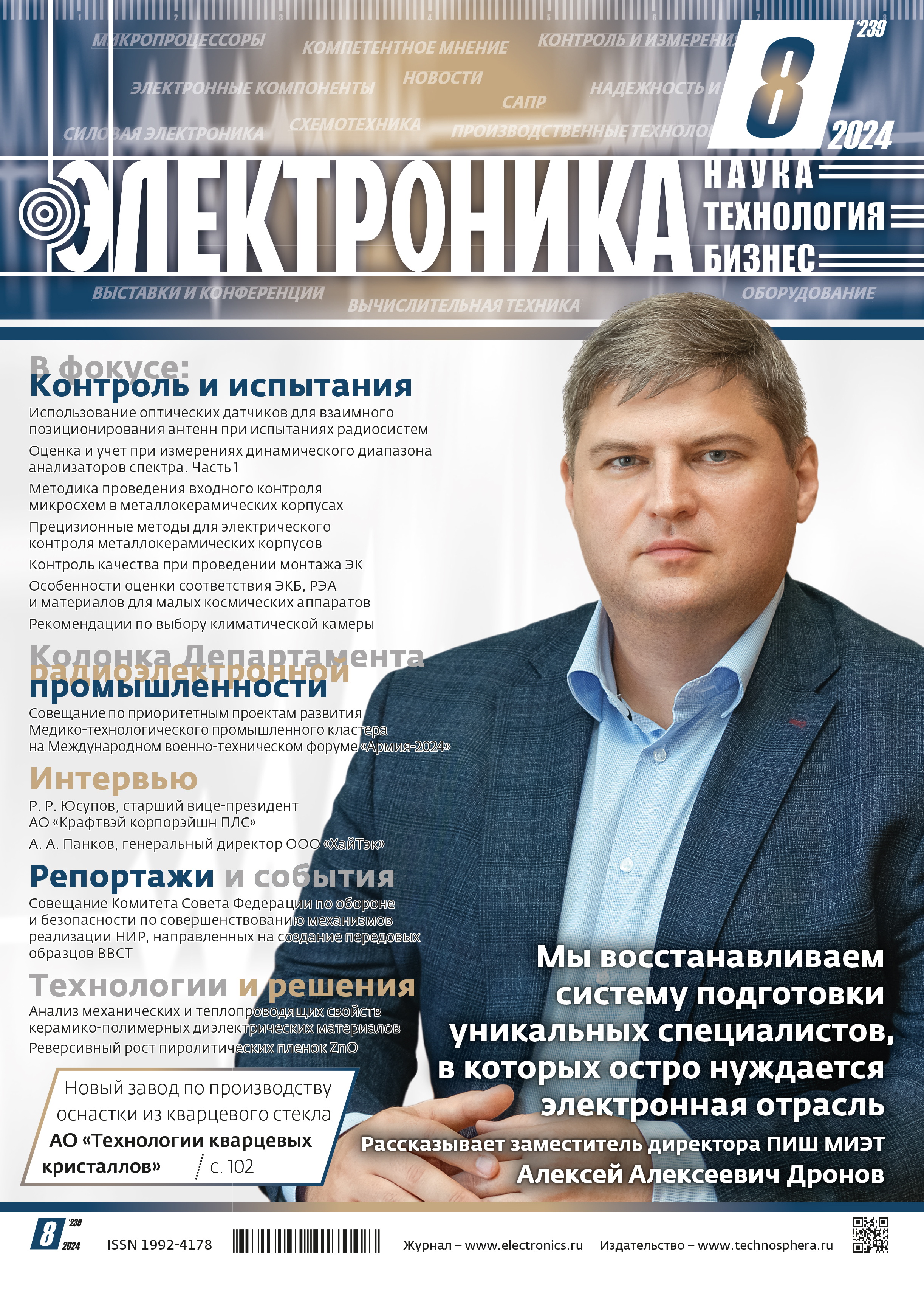EUV lithography: what is expected in 2025?
- Authors: Makushin M.1
-
Affiliations:
- НОБ «Военные науки и оборонная промышленность» БРЭ
- Issue: No 8 (2024)
- Pages: 112-119
- Section: Micro and nanostructures
- URL: https://journals.eco-vector.com/1992-4178/article/view/637279
- DOI: https://doi.org/10.22184/1992-4178.2024.239.8.112.119
- ID: 637279
Cite item
Abstract
In the next decade EUV lithography will be used to form topological elements measured in nanometers and angstroms. The article considers the single and multiple patterning techniques.
Full Text
About the authors
M. Makushin
НОБ «Военные науки и оборонная промышленность» БРЭ
Author for correspondence.
Email: kys@electronics.ru
ведущий научный редактор
Russian FederationReferences
- Макушин М., Мартынов В. Производственные технологии микроэлектроники: проблемы развития. Часть 2 // ЭЛЕКТРОНИКА: Наука, Технология, Бизнес. 2020. №4 (00196). С. 120–127.
- Макушин М. Микроэлектроника: развитие производственной базы, продажи оборудования и EUV-литография // ЭЛЕКТРОНИКА: Наука, Технология, Бизнес. 2023. №3 (00224). C. 116–129.
- EUV Lithography Market Valuation – 2024–2031 // Verified Market Research. Report ID: 9079. Published Date: Mar 2024.
- Peters L. Key Technologies To Extend EUV To 14 Angstroms // Semiconductor Engineering. July 29th, 2024.
- Sterling T. ASML's next chip challenge: rollout of its new $350 mln 'High NA EUV' machine // Reuters. February 9. 2024.
- Non Chemically Amplified EUV Resist Market, Global Outlook and Forecast 2024–2030 // Grand research Store. Published On: 29 Mar 2024.
- Imec demonstrates readiness of the High-NA EUV patterning ecosystem // IMEC. February 26, 2024.
- Meli L. at all. EUV patterned gate variation reduction in next generation transistor architectures // SPIE Digital Library. 10 April 2024.
Supplementary files
Supplementary Files
Action
1.
JATS XML
2.
Fig. 1. EUV scanner with high numerical aperture using chemically enhanced resist (CAR) forms 16nm structures, and using metal oxide resist (MOR) – 10nm structures. Source: IMEC
Download (20KB)
3.
Fig. 2. A new low-k absorber in an EUV template improves the process window and reduces the required exposure dose. Further improvements are needed in cross-linking scaling, reducing template parameter spread, and developing carbon nanotube (CNT) pellicles. Source: IMEC
Download (76KB)
4.
Fig. 3. The permissible variability (error in setting the crystal angle to a given position) decreases with the achievable resolution.
Download (45KB)











